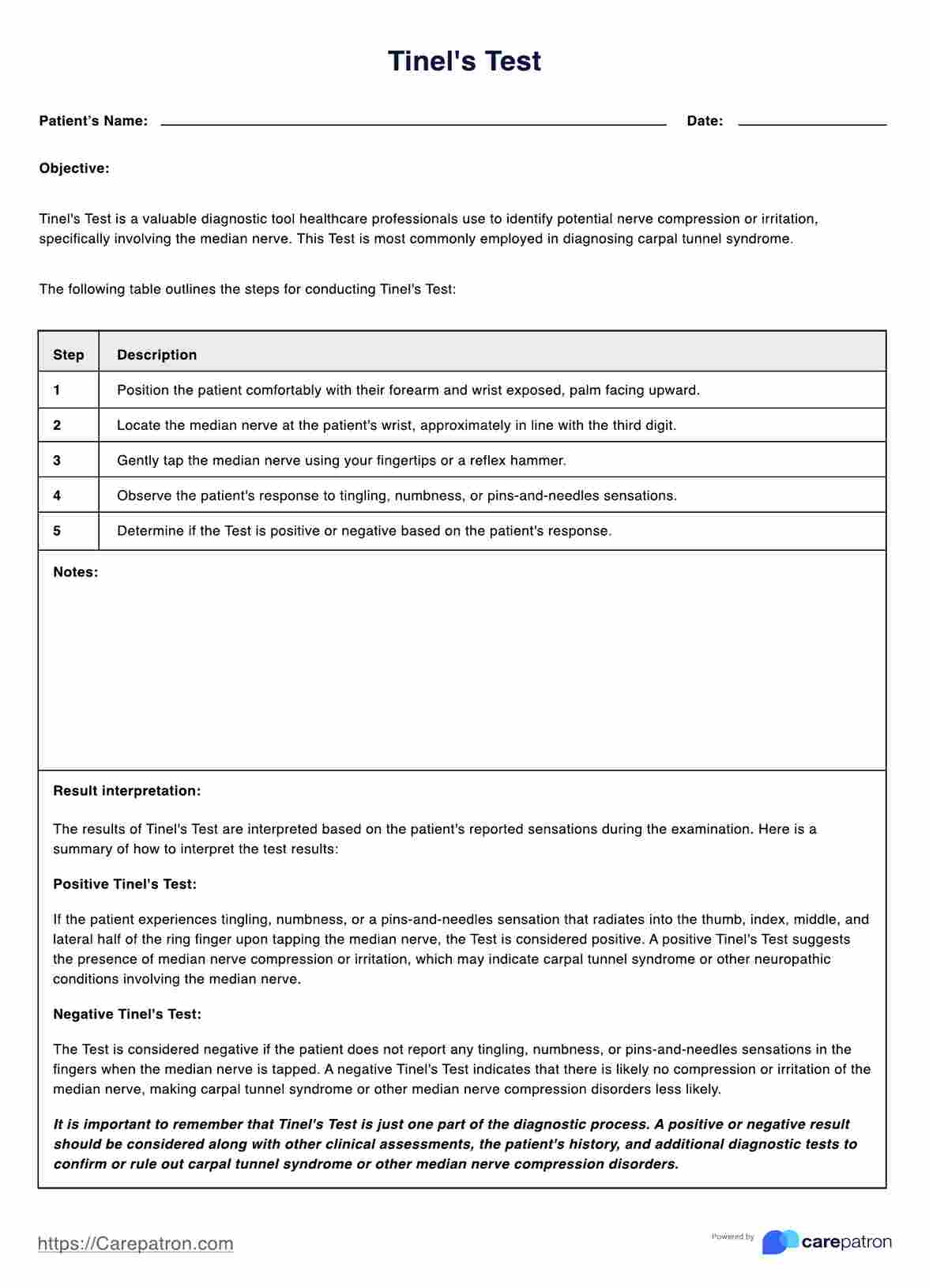Tinel's Test primarily assesses median nerve compression at the wrist. However, it can also be adapted to evaluate nerve compression or irritation in other areas, like the hip.

Tinel’s Test
Discover the essentials of Tinel's Test, a diagnostic tool for nerve compression, with a step-by-step guide, scoring, and a free PDF download.
Use Template
Tinel’s Test Template
Commonly asked questions
The benefits of Tinel's Test include:
- A non-invasive method for assessing nerve compression or irritation.
- A quick and easy test can be performed in a clinical setting.
- It can help identify carpal tunnel syndrome or other median nerve compression disorders early in the diagnostic process.
- Guides healthcare practitioners in determining appropriate treatment options based on test results.
Tinel's Test is used for nerve compression or irritation involving the median nerve. It is most commonly employed when diagnosing carpal tunnel syndrome or other median nerve compression disorders. The test helps identify potential nerve compression by eliciting symptoms like tingling, numbness, or pins-and-needles sensations in the affected fingers.
EHR and practice management software
Get started for free
*No credit card required
Free
$0/usd
Unlimited clients
Telehealth
1GB of storage
Client portal text
Automated billing and online payments











